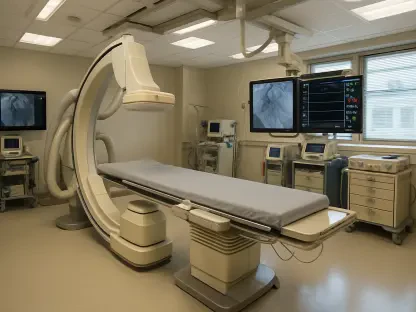The Australian government has made significant strides in its commitment to refining the nation’s digital health infrastructure. With a comprehensive financial plan for 2025-2026, the government has earmarked substantial funds to ensure the modernization and integration of healthcare systems. This move is set to transform the My Health Record system, rendering it a data-rich clinical platform that enhances real-time information sharing and integration within clinical workflows. By doing so, the country aims to improve the quality and convenience of healthcare services offered to its citizens.
Enhanced Integration and Real-time Information Sharing
To elevate the My Health Record system, the government has allocated A$228.7 million ($144 million), reinforcing its role as a crucial clinical platform. By emphasizing integration into clinical workflows, there will be seamless information exchanges among healthcare providers. Tackling the issues pointed out in the Productivity Commission report, the budget focuses on improving usability and record completeness. This is vital in ensuring that healthcare professionals have access to comprehensive patient data, leading to better-informed decisions and, consequently, enhanced patient outcomes.
Furthermore, the initiative includes substantial investment in new technology standards like the development of a FHIR-based server, underscoring the importance of adopting cutting-edge technology in healthcare. With the Australian Digital Health Agency’s recent $30 million proposal, the FHIR-based server project highlights a concerted effort to modernize the existing technological infrastructure. The integration aims to create a more cohesive and accessible healthcare ecosystem, making it easier for various stakeholders, including Allied Health professionals, to contribute and access critical patient data.
Broader Investments in Digital Health
In addition to the substantial funds allocated to the My Health Record system, the government has outlined other significant investments aimed at modernizing the digital health landscape. With A$91 million ($57 million) directed towards the digital implementation of the Aged Care Act, there is a clear focus on enhancing the digital capabilities of aged care services. This transformation is expected to streamline operations, improve care delivery, and ensure better oversight and compliance within the sector.
The budget also includes A$15.6 million ($9.8 million) for essential tasks under the Health Delivery Transformation Program, emphasizing the need for a holistic approach to healthcare modernization. Another critical area of investment is the infrastructure for national electronic prescribing, highlighted by an allocation of A$5.7 million ($3.6 million). This initiative aims to make the prescription process more efficient and less prone to errors, benefiting both healthcare providers and patients. Moreover, the government has earmarked A$46 million ($29 million) over three years to bolster national crisis support and low-intensity digital mental health services, recognizing the growing need for accessible mental health support in today’s fast-paced world.
Commitment to Continuous Improvement
The Australian government has shown a strong commitment to enhancing the country’s digital health infrastructure with a detailed financial plan covering the years 2025-2026. By allocating substantial funds, the government intends to modernize and integrate healthcare systems, setting the stage for significant improvements. One of the key aspects of this initiative is the transformation of the My Health Record system. The goal is to turn this system into a robust, data-rich clinical platform that will facilitate real-time information sharing and integrate seamlessly within clinical workflows. This effort is expected to significantly improve the efficiency and quality of healthcare services provided to Australian citizens, making healthcare more accessible and user-friendly. By focusing on these advancements, the government aims to ensure that all Australians benefit from a more interconnected and responsive healthcare system, ultimately leading to better health outcomes and increased patient satisfaction.









